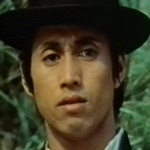|
[English]
[中文]
[中英文] Displaying English |
|
金振八
♂ Patrick Kim Jin-Pal |
Chin Chen-Pai,
Gam Jan-Bat,
Kame Chun Pak,
Kim Jin-Pal,
King Chen-Pai,
Patrick Kim,
Shin Jin-Pat,
Jin Jun-Ba,
Kam Chun-Pak
| Birthplace:
South Korea
|
|
| |
 |
 |
 |
|
||||||||||||||||||||||||||||||||||||||||||||||||||||||||||||
